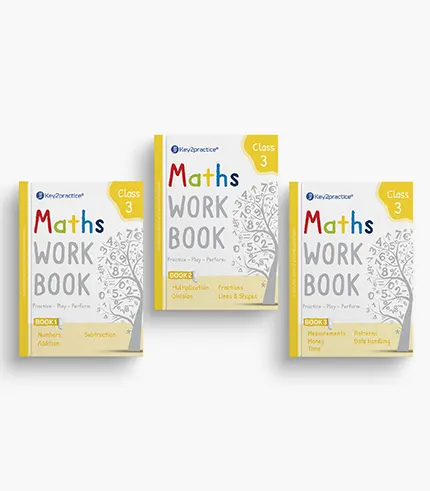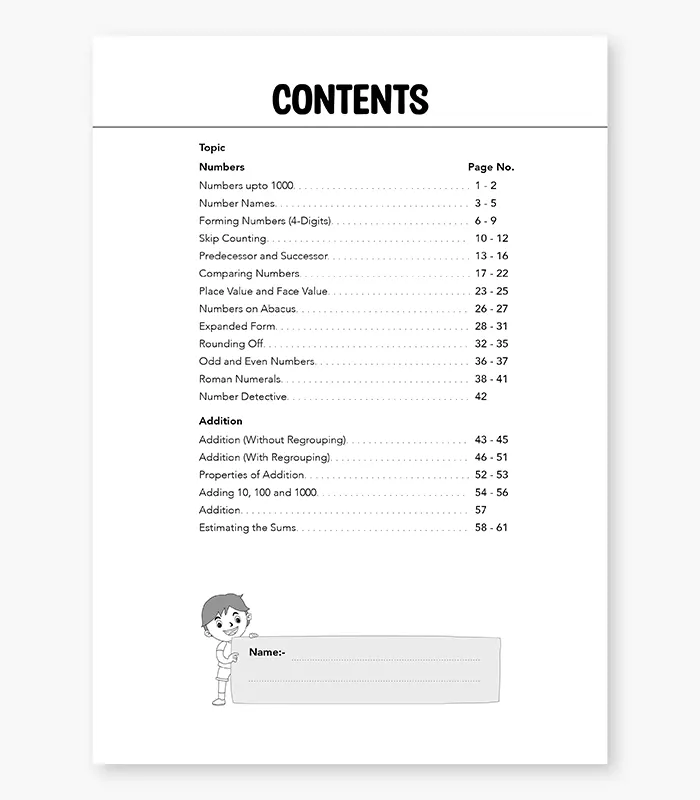As kids climb up the academic ladder they’re exposed to new topics and one such is multiplication for grade 3. In this grade, there are usually single and two-digit sums. A solid memorisation of the tables is important to grasp the topic.
In the beginning, the kids can feel a little startled, especially if they are not huge maths lovers. To make the topic interesting and engaging to them, there are certain tips. You can apply the same while teaching them and make the entire multiplication thing easier for their little brains.
We will guide you in detail with those strategies. Sounds helpful? Great, read on!
Understanding Multiplication for Grade 3
Multiplication for kids in class 3 is a mathematical operation that has equal groups to find the total quantity. It’s like adding the same number multiple times to get a quicker answer.
What is Multiplication?
Multiplication is when you combine groups of the same number to find out how many there are altogether. For example, if you have 3 groups of 4 apples, you can multiply 3 by 4 to find out you have 12 apples in total.
Why is Multiplication Important?
Multiplication is a basic skill in mathematics with far-reaching implications for problem-solving and real-world applications. It is a building block for kids for advanced mathematical concepts and helps improve kid’s critical thinking abilities for later grades.
Here are four key reasons why mastering multiplication is essential for maths skills development among kids:
Efficient Calculation: Multiplication allows for quick calculation of repeated addition, essential for solving various mathematical problems efficiently.
Foundational Skill: Understanding multiplication lays the groundwork for more advanced mathematical concepts like division, fractions and algebra that the kids have to come across in upper grades.
Real-World Applications: Multiplication is used in everyday scenarios such as calculating prices when shopping, determining areas and volumes in construction and dividing resources equally among groups.
Problem-Solving: Mastery of multiplication betters problem-solving skills by helping students break down difficult problems into simpler, more manageable parts. It helps the kids to lay a strong foundation for the more complex topics they come across in future.
Advanced Multiplication Strategies for Class 3
Multiplication for class 3 is an important topic for kids and forming mastery can help them with the understanding of overall complicated mathematical problems.
Here are some useful techniques that you can use for multiplication for grade 3.
Repeated Addition: Start with the concept of multiplication as repeated addition. For example, 3 groups of 2 can be thought of as 2 + 2 + 2.
Visual Representation: Use pictures, diagrams, or objects to illustrate multiplication problems. For instance, show 3 rows of 4 apples to represent 3 × 4.
Multiplication Tables: Introduce simple multiplication tables up to 5 or 10 and encourage memorization through repetition and practice.
Manipulatives: Incorporate hands-on activities with objects like counters or cubes to help students understand the concept of equal groups and multiplication as combining sets.
Word Problems: Provide simple word problems involving multiplication to apply mathematical concepts to real-life scenarios and enhance problem-solving skills.
Learning Timetables and Tips to Memorise
Learning multiplication tables for 3rd standard multiplication can be fun for kids with these tips:
Use Rhymes or Songs: You can create catchy rhymes or songs for each multiplication table to make memorization enjoyable and memorable for them.
Visual Aids: Using colourful charts or flashcards with pictures to represent each multiplication fact is another engaging way to keep the kids interested. Visual cues help improve memory.
Group Practice: You can even organise group activities where students can quiz each other on multiplication facts. Peer learning can make the process more interactive.
Practise Games: Introduce fun games like multiplication bingo, scavenger hunts or online maths games that help the kids equip their multiplication skills in an entertaining way.
Daily Practice: Encourage daily practice of a few multiplication facts at a time to build fluency and confidence.
Reward System: It’s best to offer them rewards for reaching specific milestones in learning multiplication tables. It motivates the little sweeties to stay engaged and focused.
Understanding Groups and Arrays
For multiplication for grades 3, a good understanding of the groups and arrays also plays a major role in the overall development of the concept knowledge and skills.
Visual Representation: Groups and arrays visually represent multiplication concepts by organising objects into rows and columns. It helps kids understand equal grouping and multiplication as repeated addition.
Concept Understanding: Manipulating objects within groups and arrays builds the concept of multiplication as combining equal sets. It’s again helpful in the comprehension of basic mathematical operations in the little brains.
Problem Solving: Utilising groups and arrays opens the door to improved problem-solving skills by providing a simple way to approach multiplication problems. It encourages the 3rd grade students to think critically and logically about mathematical concepts which is of great help in the later classes.
Practical Application and Practice
Multiplication activity for class 3 is more fun with interactive exercises and real-life problems.
That’s why integrating Oswal Publishers’ Key 2 practice maths workbook in your kid’s practice sessions is a great way to boost their understanding of the concept and prepare them for the long way ahead.
This is how it takes their learning to the next level:
- Includes activity-based exercises to help the kids exposed to different problems and adopt problem-solving skills.
- Clear instructions are provided for each chapter and question, helping the kids with clarity whenever they feel stuck.
- From basic to advanced, all the topics are included in detail to not let the students miss out on any key areas.
- Answer keys are included for every exercise, making the learning process more comprehensive for the kids.
Real-life Examples
Multiplication for grade 3 through real-life exercises is a great way to help them understand the concept more closely like,
Measurement: Multiplication is applied when measuring ingredients for recipes, like doubling a cookie recipe or increasing the amount of juice by multiplying the number of servings.
Sharing: Multiplication helps little kids understand fair sharing such as dividing a bag of candies equally among friends or distributing toys evenly among siblings. It develops the idea of basic fairness and division concepts among them.
Interactive Exercises
You should always look for interactive practices to make multiplication for grade 3 interesting for the kids.
Multiplication Worksheets: Printable multiplication worksheets with colourful illustrations and simple problems can be a great resource to offer interactive practice sessions.
Flashcards: Create or use online flashcards to practise multiplication facts. Apps like Quizlet allow students to review multiplication tables in a flashcard format, perfect for quick practice sessions.
Conclusion
That concludes our discussion on the multiplication for grade 3 tips and strategies. Please remember, they are very little and have just set out in the academic world.
It’s important to help them understand the intricacies without making it boring. And that is why, all the interactive exercises, workbooks, and practice lessons are important to keep it engaging and interesting for them.
FAQs
Q1. How can I help my child learn multiplication tables?
Ans 1. You can encourage regular practice through flashcards, online games and repetitive drills. Use visual aids like arrays or number lines to illustrate multiplication concepts.
Q2. What multiplication skills should my child have in Grade 3?
Ans 2. By Grade 3, students are expected to understand the concept of multiplication, memorise multiplication tables up to 10×10 and apply multiplication to solve basic word problems.
Q3. Why is learning multiplication important in Grade 3?
Ans 3. Multiplication builds the foundation for more advanced maths concepts in later grades and is essential for everyday problem-solving and mathematical fluency.
Q4. How can I make learning multiplication fun for my child?
Ans 4. Incorporate games, puzzles and real-life problems into practice sessions. Use rewards and positive feedback to keep your child motivated and engaged.


